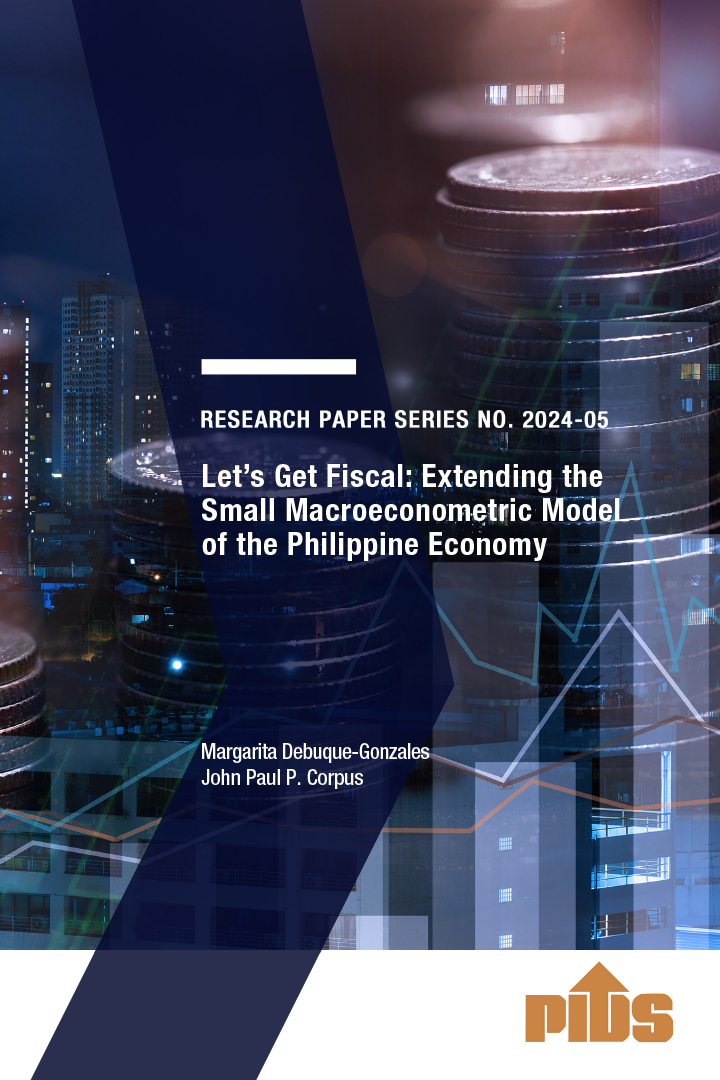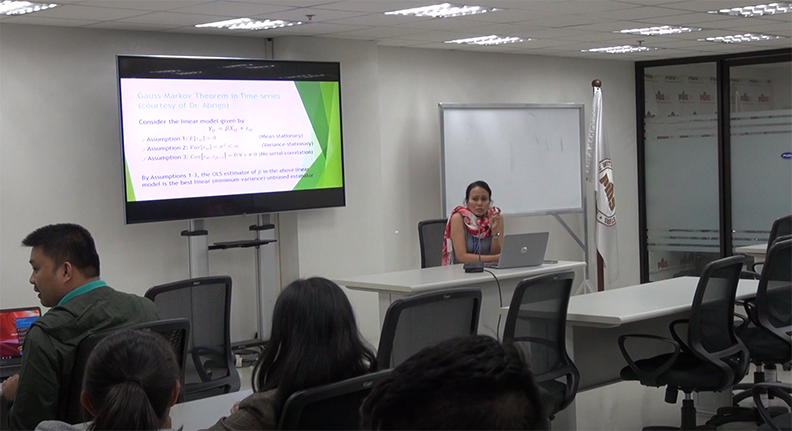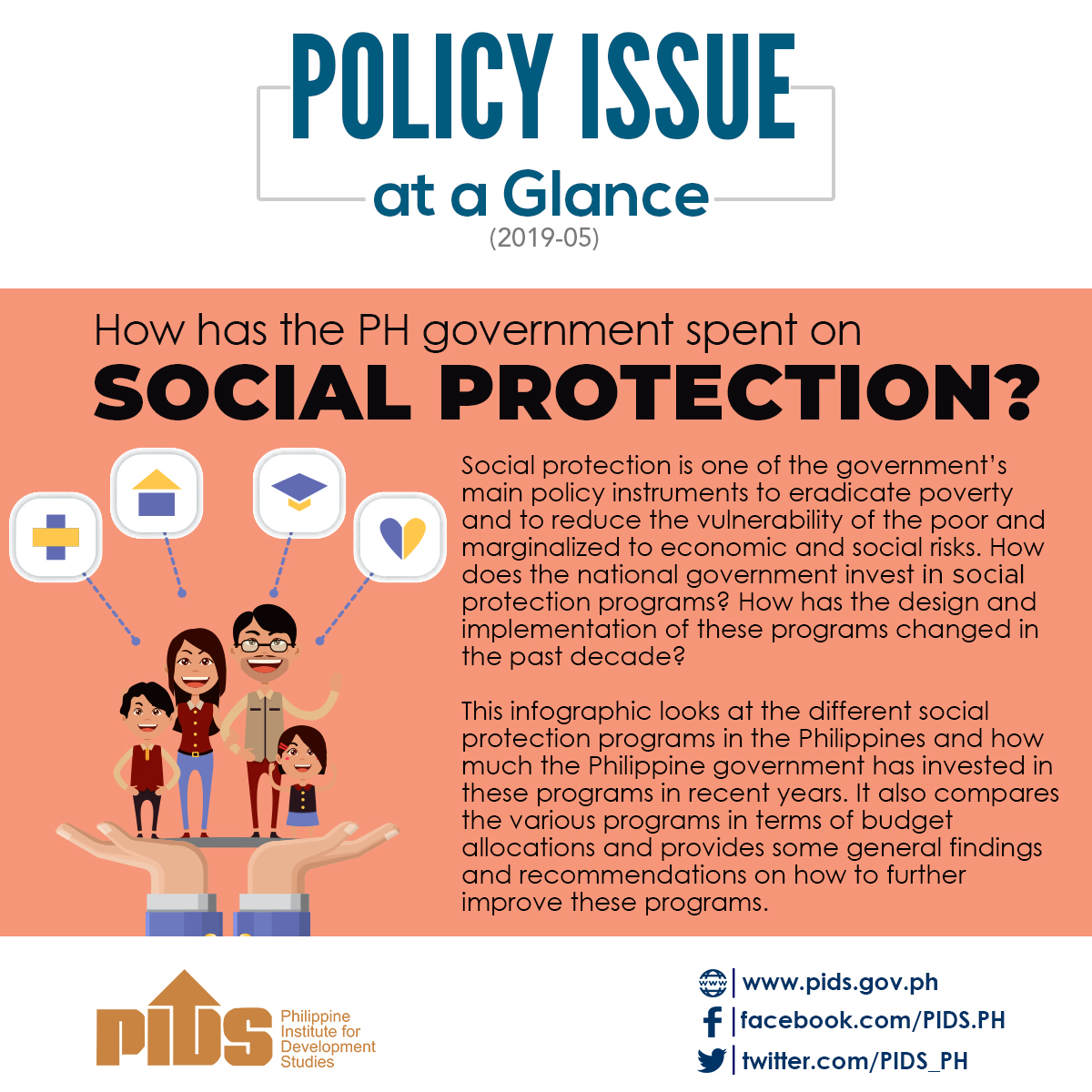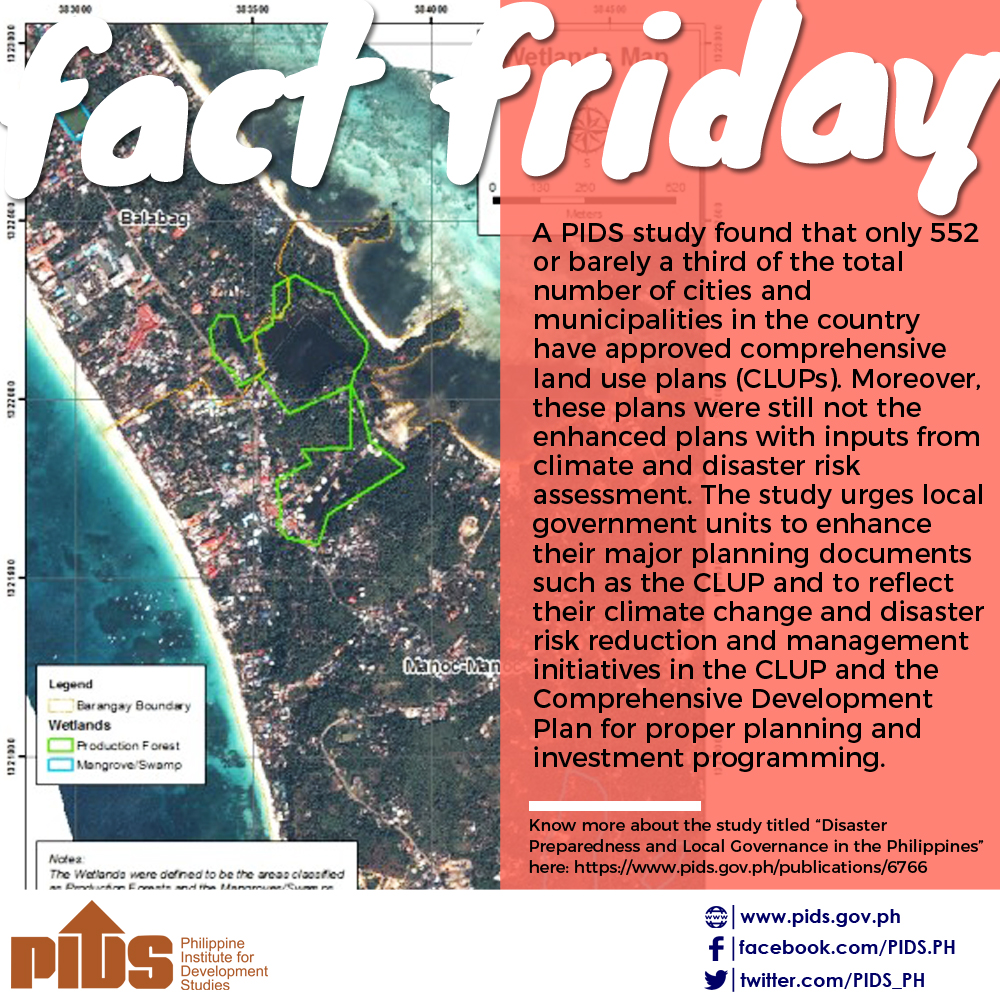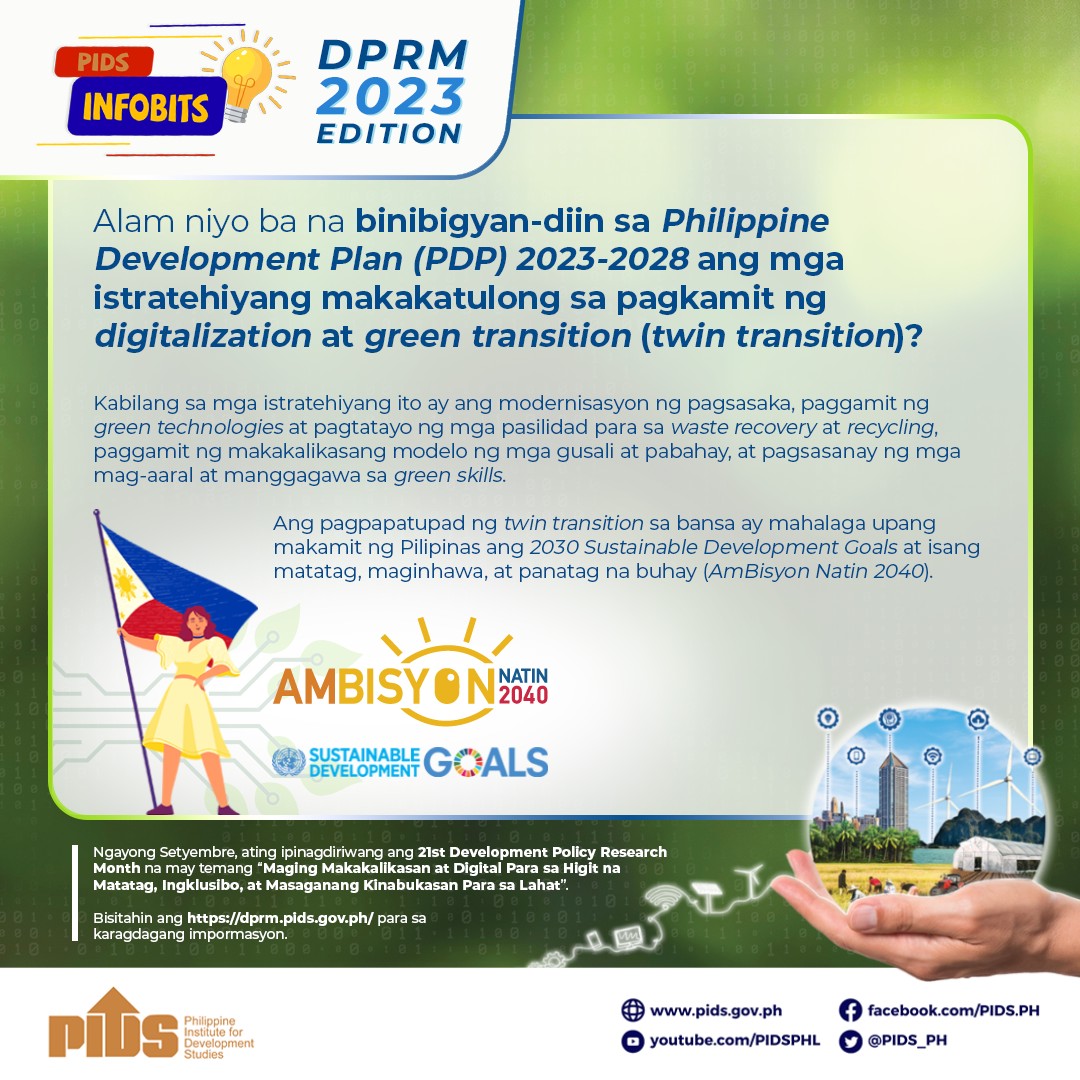In 1994 then-President Fidel V. Ramos created the Presidential Committee on Flagship Programs and Projects, which was then chaired by Emilio M.R. Osmeña.
The Estrada administration continued the committee, under the chairmanship of Roberto Aventajado, and identified a total of 128 “flagship” projects for funding. Habito said having a flagship champion is important because the government does not have a “sterling record” when it comes to project implementation.
Technical personnel lacking
Apart from the czar, government agencies also lack the technical personnel—like engineers—that will ensure proper implementation of the projects on the ground, former Philippine Institute for Development Studies (PIDS) President Gilberto M. Llanto told the BusinessMirror.
With this, Llanto said it is also important for the government to revisit its hiring policy, as it needs to have a sufficient number of engineers and other technical personnel to undertake the projects. Llanto noted that this can be easily addressed because the government enjoys sufficient fiscal space to hire additional personnel. This is something that cannot be done before because the country had a very high deficit.
“Now that you have a fiscal space, the government has to look back and check whether its own policies are constraining the implementation because, if you don’t have the right technical people in place, then necessarily, project implementation will slow down,” Llanto said.
He said he agrees with the thrust of the Department of Budget and Management (DBM) to “right size” the bureaucracy. This will ensure that agencies will have enough personnel to ensure that projects and programs are efficiently undertaken.
This, Llanto said, is the right approach in terms of ensuring sufficient allocation of resources. People are resources and, without them, projects will take time to complete or just fail altogether.
“I think the DBM is on the right path this time; it’s trying to assess the distribution of personnel across government agencies, meaning, to use the word, rightsizing approach. Rightsizing would mean providing government agencies an optimal allocation of skilled personnel and resources,” Llanto said.
Habito said the duterte administration should also reconsider its preference for official development assistance (ODA). He noted that, more than the funds, the government can rely on the efficiency of the private sector when it comes to undertaking big-ticket projects through public- private partnerships (PPPs).
“I was saddened by the shift from PPP [to ODA]. But its good that the economic managers are still open to PPPs,” Habito said.
BBB perpetuates ‘Imperial Manila’
There is also a need to distribute the projects equally among regions nationwide. He said this will prevent the impression that “Imperial Manila” still holds in this administration. Of the 75 flagship projects, around 25 are in Metro Manila and 19 were in Luzon. This means 44 of the 75 flagship projects—more than half—are in Metro Manila and Luzon.
This, Habito said, could perpetuate the notion of an “Imperial Manila,” since only 18 flagship projects are in Mindanao and 17 are in the Visayas.
Habito earlier said this will only worsen the GDP-growth distribution, which saw that Luzon’s share in GDP is at 73 percent in 2016. This share was at 66 percent in 2006 and 73 percent in 1996.
The combined share of Metro Manila, Calabarzon and Central Luzon in the GDP was 63 percent in 2016. Metro Manila alone had a share of 37 percent. In 2006 the share of the industrialized areas in Luzon was at 56 percent, while Metro Manila’s share was 33 percent.
In 1996 Habito said the share in GDP of Metro Manila, Calabarzon and Central Luzon was 53 percent, while Metro Manila’s share was 30 percent.
“Metro Manila has become even more imperial, and the “Build, Build, Build” doesn’t do anything to change that,” Habito said.
Around 20 of the 75 flagship projects have been approved by the Neda board. These include the Clark International Airport New Terminal Building Project, Mindanao Rail Project (Phase 1)—Tagum Davao Digos Segment, MRT-LRT Common Station Project,
New Bohol Airport, Chico River Pump Irrigation Project, Laguindingan Airport, Cavite Industrial Area Flood Management Project, New Bohol Airport, PNR North 2 (Malolos-Clark Airport-Clark Green City Rail) and the New Centennial Water Source—Kaliwa Dam Project.
Only the Clark International Airport New Terminal Building Project is up for implementation, but no civil works have yet begun.
‘Momentum is there’
But change and development always take time. Public Works Secretary Mark A. Villar assured the public that there is a plan, there is a vision and the builders are coming.
“Well, to be fair, we’ve been here less than two years. You know we’re under construction, so I mean these major infrastructure projects don’t get finished [immediately,” Villar said. “The momentumis there, the planning is there, and as time passes, we’ll see more projects.”
National Economic and Development Authority (Neda) Undersecretary for Investment Programming Rolando G. Tungpalan added that project approval is not the end, but only marks the start of project implementation.
Tungpalan said among the most important activities after project approval by the Neda Board is the detailed engineering design. This is a more refined project assessment to ensure that the project is not only within budget but also will be of the right quality.
“They have to do a good detailed engineering design so that they know what foundation, the strength, so you never see that on the ground. So do not be misled by no activity [even if a project is] approved, because most of them are in the detailed engineering stage,” Tungpalan explained.
The promise
The Duterte administration aims to spend P8.4 trillion for various infrastructure projects until 2022. This includes 75 flagship projects—which will bear the imprint of the President in Philippine society—and over 5,000 projects in the Public Investment Program.
In July 2017 the Neda estimated that the Three Year Rolling Infrastructure Program (TRIP) 2018 to 2020 will cost P3.55 trillion. But the numbers are expected to increase. As of January 2018, Neda documents obtained by the BusinessMirror stated that the TRIP for 2019 to 2021, in terms of cash-based appropriations, will reach P3.66 trillion.
In 2019 the amount will reach P1.05 trillion, or 5.4 percent of GDP; in 2020, P1.22 trillion, or 5.8 percent of GDP; and in 2021, P1.39 trillion, or 5.9 percent of GDP.
Not all these projects, however, will be evaluated by the interagency Investment Coordination Committee (ICC) of the Neda Board, which requires a minimum cost of P2.5 billion for each project. For 2019 only 11 projects will go through the ICC; for 2020, five projects; and 2021, two projects.
Of all the projects in the next three years, around 77 will require right of way acquisition (Rowa) and two will require resettlement. The government will invest some P4.86 billion for Rowa and resettlement in 2019; around P4.52 billion for 2020; and P932.77 million for 2021.
However, the Neda said the investment estimates for 2019, particularly, may further increase because some project proposals have not yet been completed and received by the Neda. These agency proposals are estimated to increase the cash-based appropriations needed for infrastructure projects to P1.3 trillion in 2019.
The way forward
To see to the implementation of the “zero- to 10-point agenda,” the President issued Executive Order 24 creating, among others, the Infrastructure Cluster (IC). The IC is chaired by the DPWH and cochaired by the Neda.
Tungpalan said the IC, as opposed to the Infrastructure Committee (Infracom), is focused on the implementation side of projects. The Infracom is focused on policy, strategy and programming, such as the creation of master plans.
The IC will be in charge of addressing immediate project concerns, such as Row, and other operational issues to ensure that projects remain on track.
“It’s a quick way to get things discussed quickly and hopefully solutions agreed to. It’s not a policy-making body unlike the Neda Board Committees, [which] have policy-making [functions] that’s confirmed with the Neda Board. The IC doesn’t formulate policies,” Tungpalan said. This is just one of the key changes that the government instituted to speed up, not only project evaluation, but also implementation. In 2017 Tungpalan identified major changes in the Investment Coordination Committee to speed up project approval.
These include the creation of the Project Facilitation and Monitoring and Innovation Task Force, which aims to ensure that flagship projects are implemented and completed on time.
Another initiative that sought to hasten project appraisal and approval process is the $100-million Infrastructure Preparation and Innovation Facility (Ipif).
The Ipif now covers 21 projects from the indicative list of 19 projects. The list now includes eight road and bridge projects; six water projects; and six rail, public transport, port and airport projects.
“To be fair, infrastructure projects do not mean that in six months these will be completed. The major ones take a year or two. So that’s why I’m saying two years into the administration, we’ll start feeling the effects of some of the projects. As we go further, we’ll feel even more,” Villar assured.

